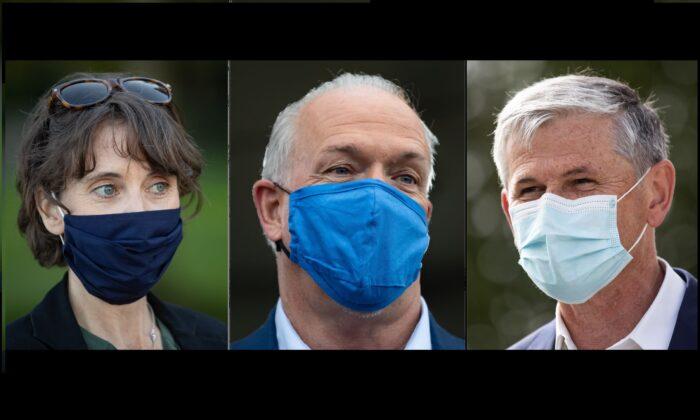It’s still a long way from election day in British Columbia, but one thing is certain after the Oct. 24 vote, there will be at least 15 new faces in the legislature.
The number of people not seeking re-election for the New Democrats, Liberals and Greens leaves the door wide open for political opportunity and party renewal, say political experts.
Among those not seeking re-election in the 87-seat legislature are seven New Democrat cabinet ministers and seven Liberals, two of whom were first elected in the 1990s.
Former Green party leader Andrew Weaver, who left earlier this year to sit as an Independent, won’t be running after serving two terms in the Oak Bay-Gordon Head riding.
Prof. Gerald Baier, a Canadian politics expert at the University of B.C., said he considered it strange the number of incumbent New Democrats who decided not to run this fall, especially with the party ahead in the polls.
“Usually, that attracts a lot of people who want to stick around,” he said in an interview. “I was actually surprised by the number of the people who had been in opposition and now that they are in government and they are tired of it that quickly.”
Among the NDP cabinet ministers not running are Judy Darcy, Doug Donaldson, Scott Fraser, Michelle Mungall, Scott Simpson, and Claire Trevena.
The portfolios they held included: forests, energy, mental health and addictions, poverty reduction, transportation and Indigenous relations.
Finance Minister Carole James announced last March she would not be running in the 2020 election for health reasons.
The departure of seven Liberal MLA’s, including veterans Rich Coleman, Linda Reid and Ralph Sultan, gives Liberal Leader Andrew Wilkinson the opportunity to put a new face on his party, said Prof. Kimberly Speers, a Canadian politics expert at University of Victoria.
“Certainly, those who have served a political party as an elected member for a long time, sometimes they can also be seen as the old guard,” she said. “If they’ve been affiliated with a previous leader or thinking within a party, sometimes a new leader or new members might think it’s time to get rid of the old guard.”
Baier said the NDP turnover gives party Leader John Horgan the chance at renewal for his group while offering opportunities for his members.
The current NDP vacancies allow Horgan, if the NDP is re-elected, to promote from his backbench or reward newly elected members of the legislature, said Baier, adding members Sheila Malcolmson and Bowinn Ma are possible new ministers.
The candidacy of three former federal New Democrat members of Parliament: Fin Donnelly, Murray Rankin and Nathan Cullen, also provides Horgan with the possibility of having three experienced politicians who could be potential cabinet ministers, Baier said.
But the possible arrival of new NDP faces may also force Horgan to change his political style of leaving ministers on their own to handle their duties as he has done with James and Health Minister Adrian Dix during the COVID-19 pandemic.
“It might mean he may be a little more hands-on, because certainly the feeling was with James and Dix he could just leave them in those jobs,” Baier said. “He’s had utter confidence in them because he’s known them since they were puppies.”
With the Liberals, the departures of Donna Barnett, Linda Larson, John Yap, Steve Thomson and Sultan, Reid and Coleman, gives Wilkinson the chance to renew the party, but he may not have much time, said Baier.
“The question is, is Wilkinson making the party in his own image? I don’t know,” Baier said. “I think people still don’t have a good grip on who he is.”
Speers said the COVID-19 pandemic may have played a part in decisions made by the politicians not to run again.
“I think it’s given everybody a time to reflect and perhaps revamp their priorities in terms of what is really important,” she said.





